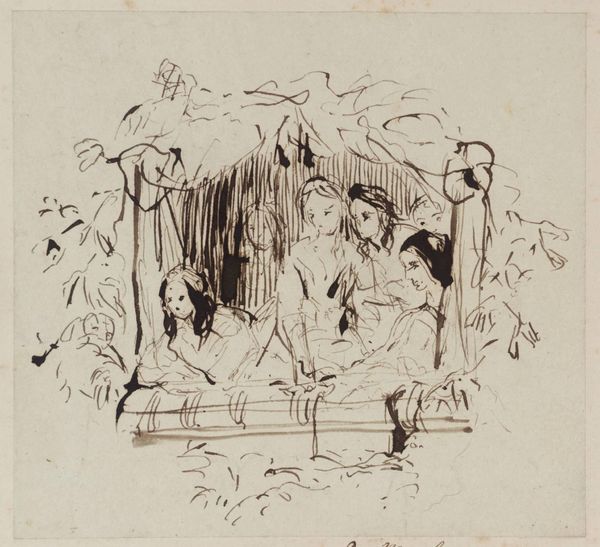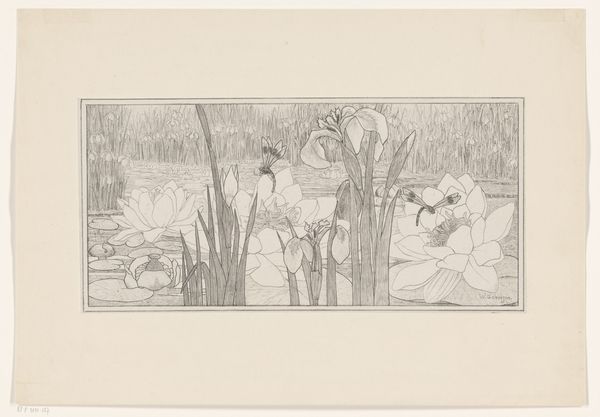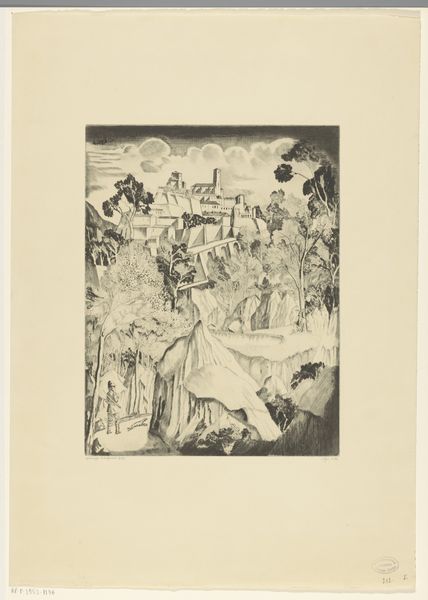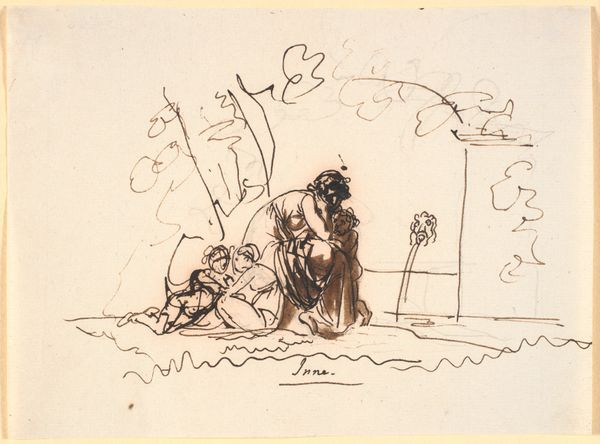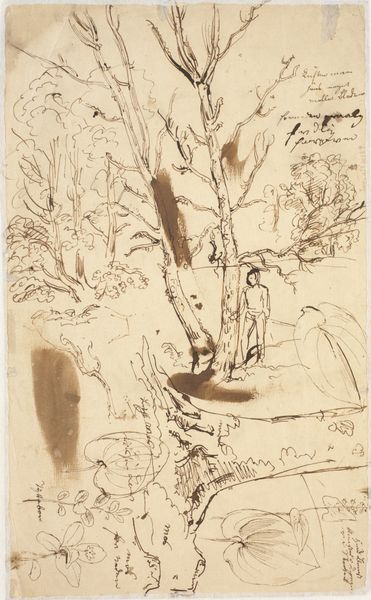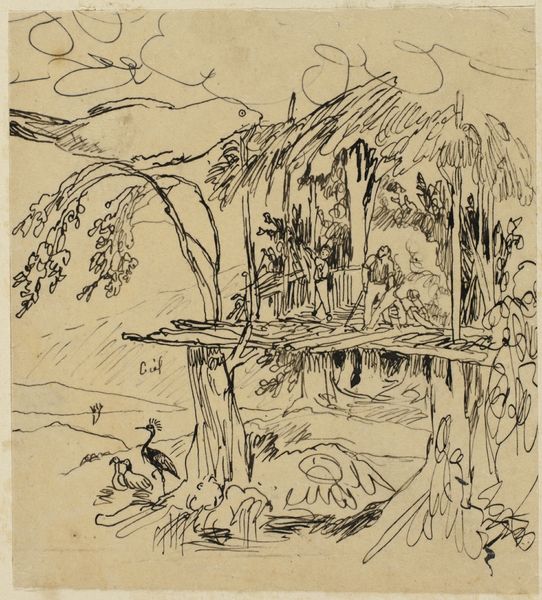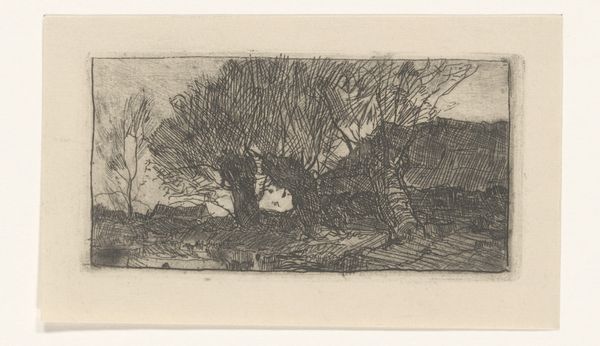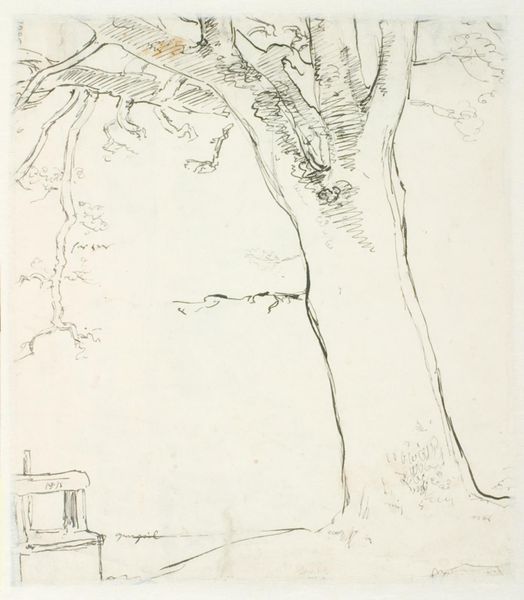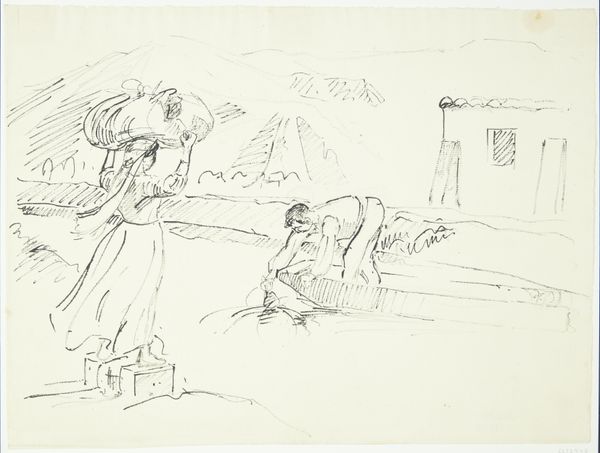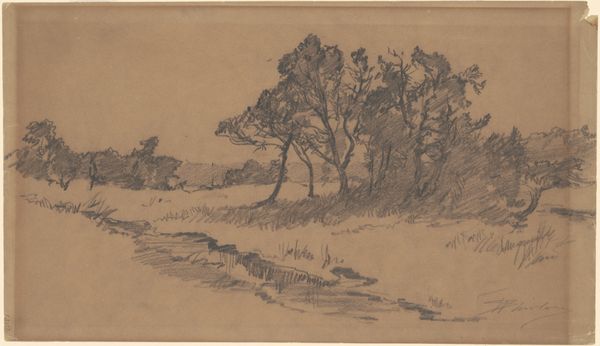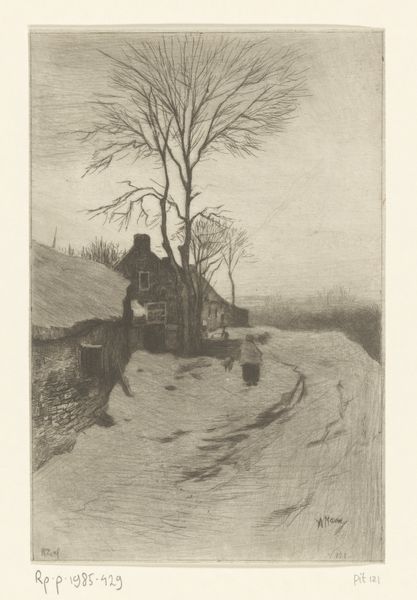
drawing, print, etching, ink
#
drawing
#
ink drawing
# print
#
impressionism
#
etching
#
ink
#
cityscape
Dimensions: Sheet: 11 15/16 × 18 3/4 in. (30.3 × 47.6 cm) Plate: 11 9/16 × 13 11/16 in. (29.3 × 34.7 cm)
Copyright: Public Domain
Curator: What a whimsical scene! This etching, "Decoration for a Plate: Notre Dame," dating back to 1870, truly dances on the fine line between functional art and pure fancy. Editor: Whimsical, indeed, but that's not my first impression. Looking at F\u00e9lix Bracquemond's work, especially created during a period of immense social and political upheaval, what emerges for me is the theme of social constraint amid beauty. Curator: That's fascinating. Tell me more! Editor: Bracquemond was working when Paris was struggling under siege in the Franco-Prussian War. Here, you have elegant figures contained within this circular design as if they are living in a gilded cage, Notre Dame looming distantly in the background as both a monument to French identity but also its frailty. It raises interesting questions about how social norms of bourgeois leisure served as a performative shield against very real terrors. Curator: That context really does reshape my reading of the work! Now the elegant woman leaning on the bridge isn’t just enjoying a stroll; her very posture seems loaded with a detached yet burdened awareness. What is she looking at? What is she thinking? It becomes a profound statement about witnessing history. Editor: Exactly. And the decorative "plate" format enhances that tension, serving luxury amid national crisis. Even the almost cartoonish figure floating above, banner trailing, introduces ideas of fantasy and escapism. Curator: Yes, and the etching style with its fine lines allows for such a layered reading! What at first seemed a lighthearted Parisian scene transforms into something much more introspective and, dare I say, mournful. It’s funny how an artwork ostensibly meant to adorn something mundane as dinnerware can reveal these hidden depths. I see now it almost becomes an ironic reflection. Editor: An artwork speaks to us depending on when we look at it, which is perhaps the mark of how well it captures the artist's intent. The way we engage with beauty, how it’s employed, and whom it serves, all become fair questions for us as its audiences, as they once were for Bracquemond too. Curator: Right! A seemingly straightforward decorative piece turns into an incredibly charged mirror, making us consider who gets to look away from disaster and who must keep watching. Editor: Precisely. This piece lingers with the awareness of that chasm, long after one leaves the museum.
Comments
No comments
Be the first to comment and join the conversation on the ultimate creative platform.
